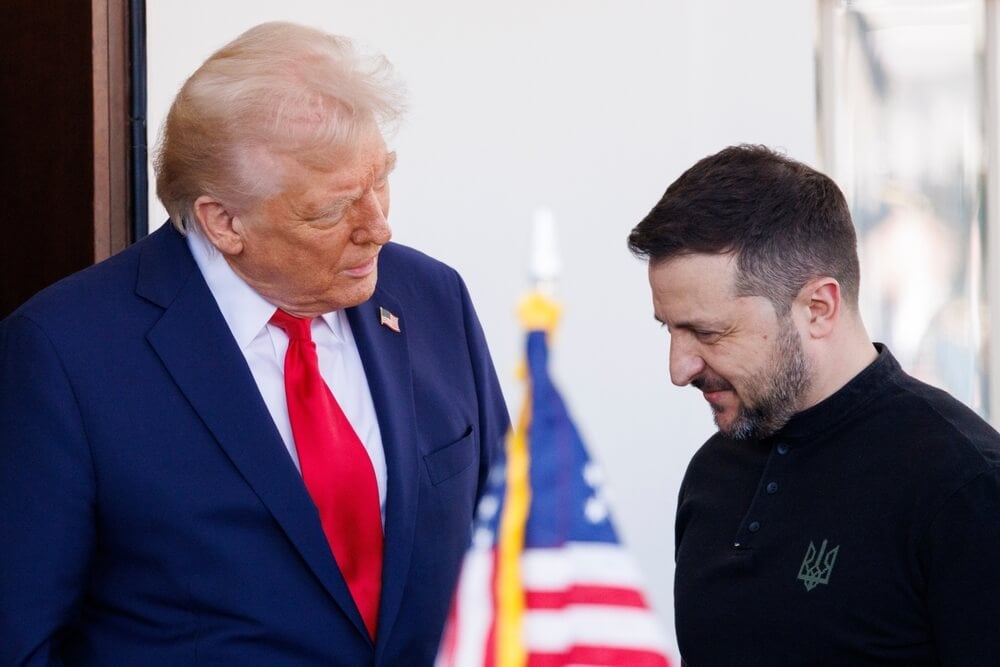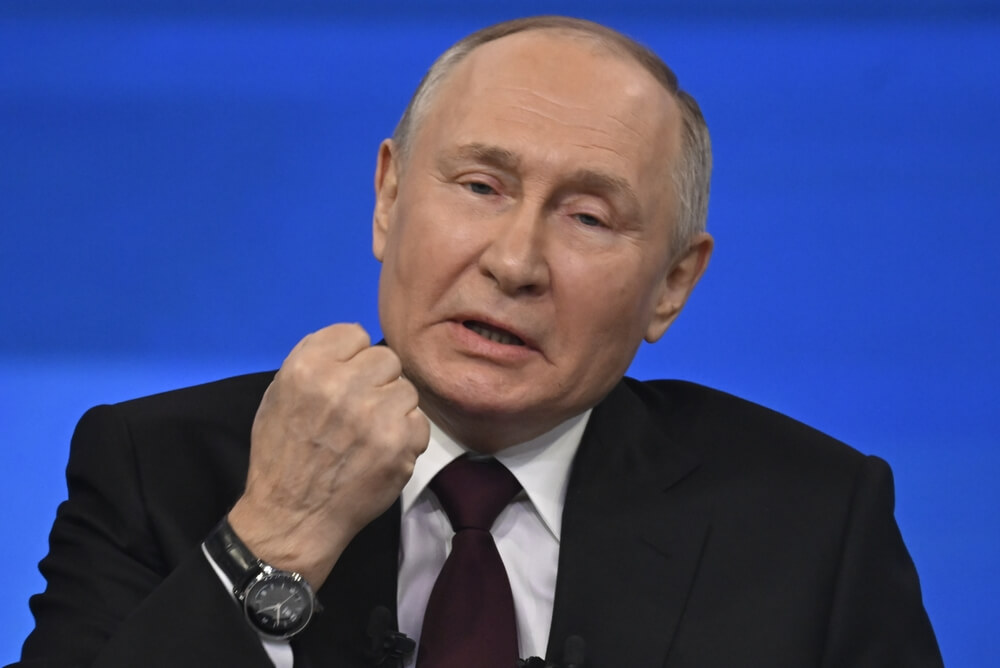The meeting between Donald Trump and Vladimir Putin at the JBER military base in Anchorage will attract a lot of attention but will only have a limited impact.
Alaska will not bring peace. It will bring a camera crew and a few practical steps that can be politically packaged into different narratives.
The meeting between Donald Trump and Vladimir Putin at the JBER base near Anchorage was staged as a demonstration of American strength on domestic territory, but without Ukraine at the table.
In the run-up to the trip, Trump threatened "severe consequences" if Putin rejected a ceasefire. This public message sounds resolute, but it still lacks a clarified implementation mechanism.
The White House confirmed the summit and set the date for Friday. It will take place after Trump's marathon video conference with Volodymyr Zelenskyy and European leaders.
Before the summit, the Europeans endeavoured to draw red lines: no territorial cessions, no "deals" at Kyiv’s expense and a mandatory ceasefire before anything substantial happens.
Macron said that only Ukraine can negotiate on territorial issues, while German Chancellor Friedrich Merz insisted that a power that changes borders with war should not be rewarded.
The messages from the European-Ukrainian call with Trump are along the same lines—support for a ceasefire but without legitimising conquest.
This framing is important because it directly limits the room for manoeuvre for both Trump and Putin in Alaska, at least in the formal part of the statements.
Essentially, however, this episode will not be decided at the conference table but before a domestic audience in Russia.
Putin's system operates as a harsh patronage pyramid that punishes weakness. "The move, which looks like a retreat," risks shaking the loyalty of the siloviki and business clans who bear the operational burden of the war and the finances.
That is why the spectacular agreement is politically unviable for the Kremlin. Moscow is more likely to make a limited humanitarian gesture that won't change the front or raise territorial issues.
Therefore, Moscow may consider exchanging prisoners, exchanging remains, and potentially implementing a temporary ceasefire in specific regions. Such a move "looks humane" on TV, and at home, it doesn't look like giving in.
No “magic button”
Despite its harsh tone, the US administration has also sent a technical signal that logistics and protocol are important to it.
In the run-up to the summit, OFAC issued a temporary General Licence 125 allowing "necessary and customary" transactions to attend and support the meeting in Alaska.
This is not an easing of sanctions against Russia, but a precisely allocated relief to allow the summit to take place at all, with a timeframe until after the weekend.
The mere act of issuing GL 125 confirms the White House's desire to create space for the "second chapter" of talks but also the intention to keep the rest of the sanction regime intact.
What does Trump really have in his hands? No "magic button" for the immediate lifting of key measures.
The comprehensive sanction provisions enacted towards the end of the previous administration are still in place.
In practice, many of the measures that could change Putin's calculus—from drastic reductions in the "shadow fleet" to significant tariff pressure on third countries that buy Russian oil (500% tariffs have been announced)—would require a broader coalition and a political price that Washington and its allies may not be willing to pay in the short term.
Market logic fits this assessment. Analysts who follow oil prices warn that the actual impact of the summit on the energy sector will be minimal unless there is a tangible, verified change – for example, a partial easing for Russian oil that is aligned with Europe. Without this, everything will depend on expectations and short-term impulses.
However, if negotiations fail, a more feasible combination of tightening sanctions and tariffs against buyers of Russian oil is more realistic.
However, implementing such a policy presents a domestic political challenge for Trump.
The Kremlin does not see sufficient motive for a strategic concession in Alaska
If he introduces high tariffs or other restrictions on buyers of Russian oil, this could reduce global supply, and the result would be an increase in oil and fuel prices.
A higher fuel price would hit American consumers, which is politically unpopular and runs counter to Trump's interest in portraying low petrol prices to domestic voters as one of his successes.
This is the reason why the Kremlin does not see sufficient motive for a strategic concession in Alaska.
The Russian pattern of behaviour in times of crisis further narrows the scope of optimism.
In May, the most massive combined attack by drones and missiles since the beginning of the war was recorded – precisely at the time when "humanitarian developments" were being announced on the diplomatic channel.
With such strikes, the Kremlin is sending the message that external threats do not change its calculations and that it wants to maintain control of the tempo by force and not by gestures.
If, after Alaska, the messages from Washington take a "tough" tone with no quick steps in implementation, it is fairly certain that Moscow will respond with a new wave of heavy air strikes – as a message to its domestic audience not to be afraid.
Round 2 or expiration: signals from GL 125
So, what is realistically on the table tomorrow? Firstly, a package of humanitarian measures that can be implemented quickly and used politically by both sides.
The exchange of prisoners and remains has both symbolic and operational value.
 The declaration of a "two-plus-one meeting" between Trump, Putin, and Zelenskyy is merely a diplomatic ploy
The declaration of a "two-plus-one meeting" between Trump, Putin, and Zelenskyy is merely a diplomatic ploy
In the Russian narrative, this is presented as "concern for the soldiers"; in the American and Ukrainian narrative, as "a small but concrete step".
Secondly, a short-term, geographically limited ceasefire in certain sectors. Such a "tactical respite" does not mean that the skies will be quiet.
It is very possible that land forces will remain silent in certain sectors, while air strikes on logistics and energy will continue.
Third, the declaration of a "two-plus-one meeting" between Trump, Putin, and Zelenskyy is merely a diplomatic ploy with little substance to sustain the narrative following Anchorage.
In this context, Trump's "post-summit" narrative becomes a key factor. If he presents the outcome as a "historic breakthrough", even if it is only symbolic, the pressure on Kyiv to "not miss the opportunity" will increase.
In this case, European centres will balance between publicly emphasising principles and quietly preparing to freeze the front with "verification arrangements" that sound firm but in practice legitimise the status quo.
However, if Trump leaves the base with the message that Putin has been "bluffing" and that punishment will follow, what can be expected from the Kremlin is not a defensive, but an escalation that returns the starting point of negotiations with force.
The American factor of domestic politics remains. In Congress, there is a proposal for the Russia Sanctions Act of 2025 (S. 1241/H.R. 2548), which focuses on secondary measures and tariffs against actors that perpetuate the Russian war economy.
If the OFAC extends or expands this licence immediately after the summit, this is a signal that work is being done on "Round 2"
This bill initially gained momentum but was then stalled by Republican leadership to give the White House room to negotiate.
The very fact that such an instrument is hovering over the table increases uncertainty for Moscow and sends a signal that Trump is not the only player. If the talks in Alaska fail, Capitol Hill will be the next primary destination.
In the meantime, OFAC licence GL 125 is only valid for a few more days (General Licence No. 125 … valid until 12:01 a.m. EDT, August 20, 2025).
If the OFAC extends or expands this licence immediately after the summit, this is a signal that work is being done on "Round 2" and that the logistics remain open.
On the other hand, if the authorisation remains limited and expires without an extension, the assessment suggests that Washington will adopt a more assertive stance, relying more on pressure and coordination with Europe than on "diplomatic momentum" with Putin.
Both are possible, but both scenarios confirm that a grand deal in Alaska is unlikely, and a transitional arrangement much more likely.
Anchorage will not end the war, only change its pace
In all of this, it is important not to lose sight of one elementary point: the Kremlin's war calculation is first and foremost internal.
Putin must maintain the image of a man who sets the pace and imposes conditions. The mafia-like hierarchy does not tolerate messages of weakness.
 Putin must maintain the image of a man who sets the pace and imposes conditions
Putin must maintain the image of a man who sets the pace and imposes conditions
For this reason, Alaska can produce images of handshakes and brief ceasefires, but not a strategic shift.
Trump can promise tough consequences and announce the "next meeting" with Zelenskyy, but without European involvement in real levers – secondary measures against buyers of Russian oil, joint confrontation with the "shadow fleet", strict tariff regulations – threats remain empty words, not policy. The Kremlin does not take them seriously in this form.
The bottom line is clear. The summit in Anchorage is political theatre with little room for useful symbolism.
We will see agreements and announcements, perhaps a brief pause in some parts of the front line. We won't witness an agreement that fundamentally alters the current situation.
And how Trump will sell this result at home—as a "historic success" or a "threat to uncooperative Putin"—will determine the next steps.
The first scenario involves exerting pressure on Kyiv, while the second scenario involves Russian escalation.
In both scenarios, Putin responds to the domestic audience and retains control of the rhythm. For this reason, Alaska will not end the war. It will only change its pace.